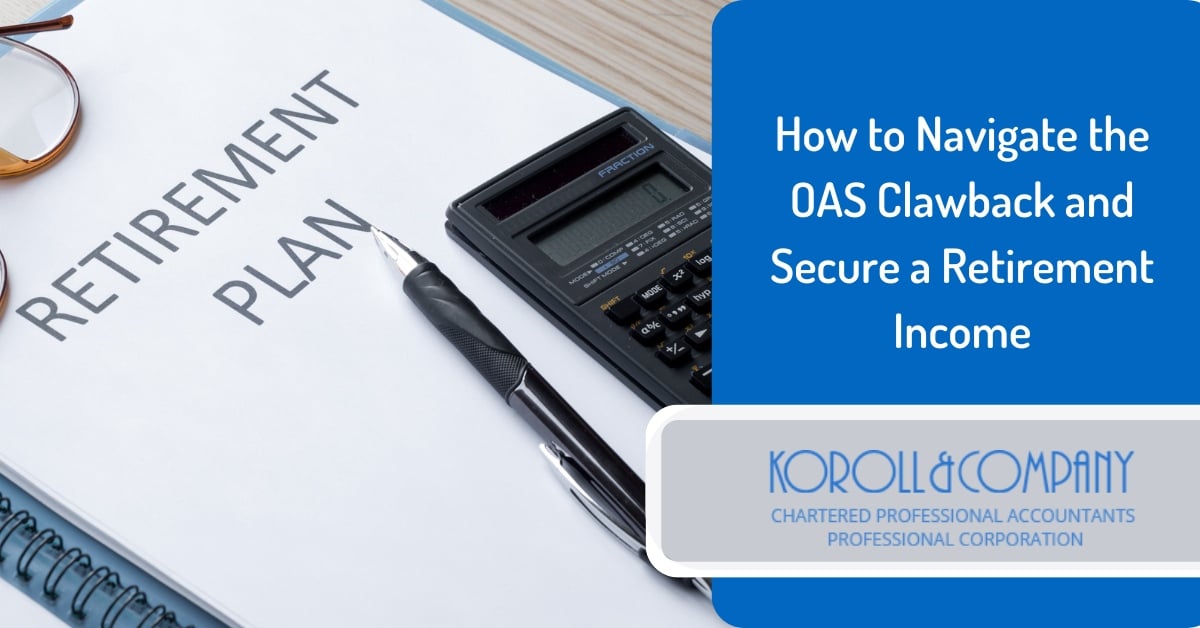 Preparing for retirement is a significant aspect of financial planning, especially when it comes to securing income sources during the golden years.
Preparing for retirement is a significant aspect of financial planning, especially when it comes to securing income sources during the golden years.
In Canada, retirees have several avenues for income, such as the Canada Pension Plan (CPP), registered retirement savings plans (RRSPs), and employer-sponsored pension plans.
There’s also the Old Age Security (OAS) program.
This program provides financial assistance to Canadian residents, offering a unique advantage over other retirement income sources – it doesn’t require you to make contributions during your working life to enjoy it.
The OAS program does, however, come with one catch - the OAS clawback.
Understanding the OAS Clawback
While many income sources in retirement are dependent on individual contributions made during their working life, the OAS program stands apart. It’s solely based on the number of years of Canadian residence, allowing individuals who have been Canadian residents for 40 years (after the age of 18) to receive full OAS benefits.
In the first quarter of 2023, the full OAS benefit for individuals under 75 years of age amounted to $687.56 per month, while the maximum monthly payment amount from July to September 2023 $698.60. Based on changes in the Consumer Price Index, OAS benefits will increase by 1.3% for the October to December 2023 quarter, for an increase of 3.2% over the past year, from October 2022 to October 2023.
Unlike other retirement income sources, the federal government can require the recipient to repay amounts under the OAS clawback (also known as the OAS recovery tax). More specifically, if a retiree receives OAS benefits in a year and their annual income exceeds a specified amount that same year, they must repay a portion of the benefits received. This is done by reducing the following year’s benefit by 15% of the income over and above the income threshold.
In 2022, the income threshold for OAS was $81,761. In 2023 it is $86,912.
Calculating the Clawback
To understand the clawback calculation, consider an individual who received full OAS benefits in 2022 and had a net income of $90,000 for that year. With an income exceeding the clawback threshold of $81,761, they would be subject to the clawback. The repayment amount is determined at a rate of 15% for every dollar of income exceeding the threshold.
Total income for 2022: $90,000
OAS income clawback threshold: $81,761
Income over clawback threshold: $90,000 - $81,761 = $8,239
Clawback repayment amount: $9,239 * 0.15 = $1,235.85
Consequently, the individual's OAS monthly benefits for the next benefit year (July 2023 to June 2024) would be reduced by 1/12 of the amount owing.
Mitigating the Impact of the Clawback
While the OAS clawback may not pose significant financial hardship for those with an annual income over $81,761, it can still be a source of frustration for disciplined savers aiming for a comfortable retirement.
The good news is, there are strategies to minimize or even eliminate exposure to the clawback, some of which can be implemented before retirement.
Income Smoothing: Determining the total income from all sources during retirement, including CPP, OAS, RRSPs, and private pension plans, can help retirees plan for a smoother income flow. Early withdrawal from RRSPs before turning 71 can reduce the likelihood of a significant income spike when mandatory withdrawals kick in. While you do have to pay taxes on these early withdrawals, the funds can still be saved in a TFSA and continue to compound tax free.
Pension Income Splitting: For married individuals, pension income splitting can be a powerful strategy. By reallocating "excess" income to their spouse, neither of them may be affected by the clawback. This notional reallocation only exists in the tax return for the year and doesn't require any change in actual income.
As Canadians plan for a secure retirement, understanding the OAS clawback is crucial to optimizing their income sources.
While the clawback affects those with an annual income of at least $81,761, strategic planning can help retirees minimize its impact. By adopting income smoothing techniques and exploring pension income splitting, individuals can navigate the OAS clawback and ensure a financially stable and enjoyable retirement.
Interested in learning more? Get in touch with the Koroll & Company team of chartered professional accountants today.






